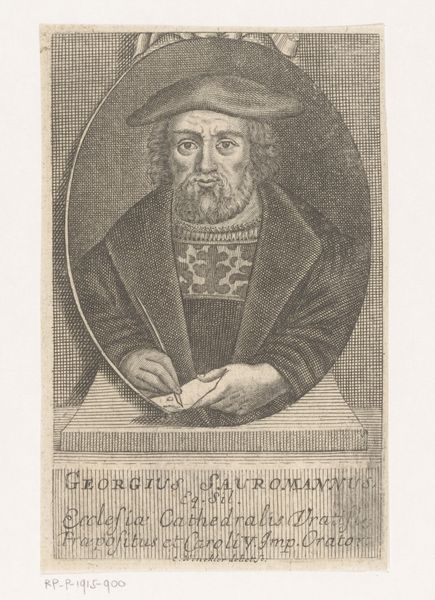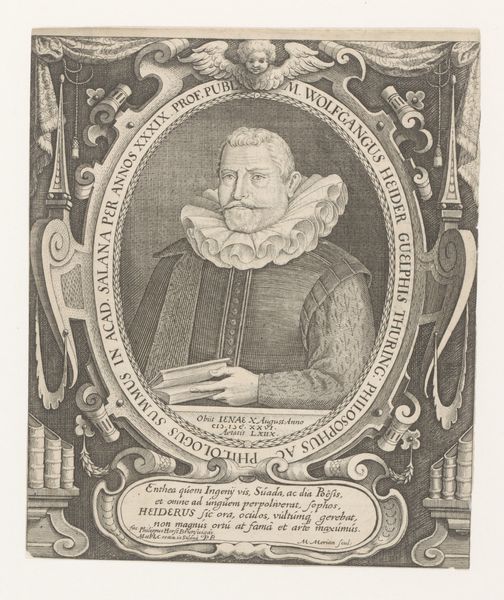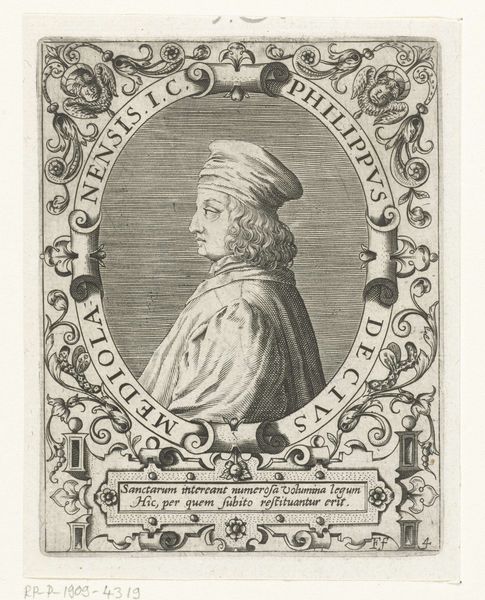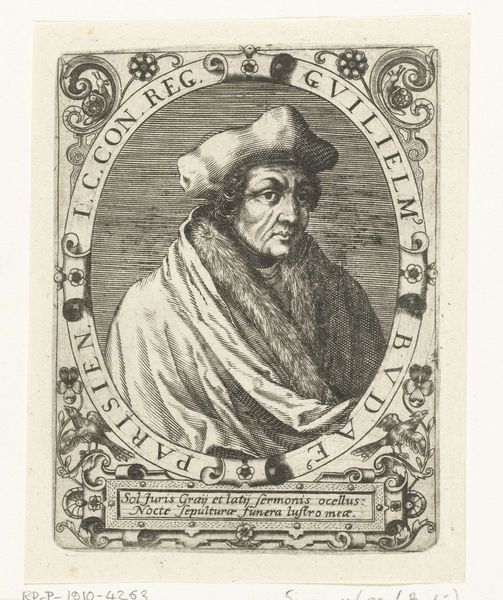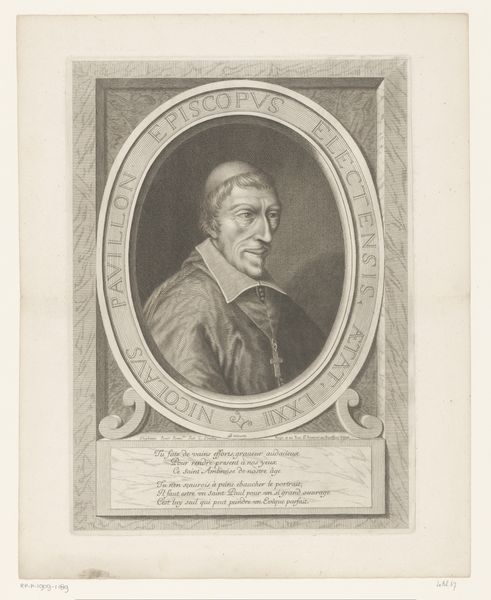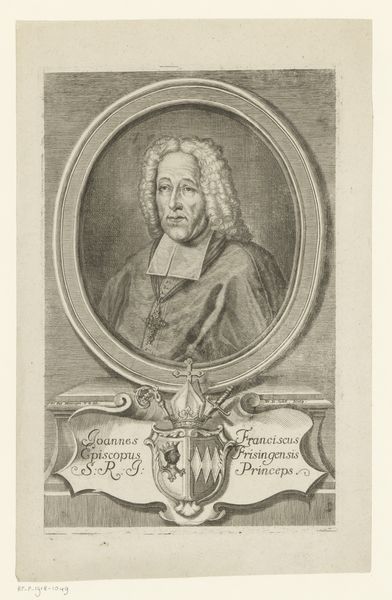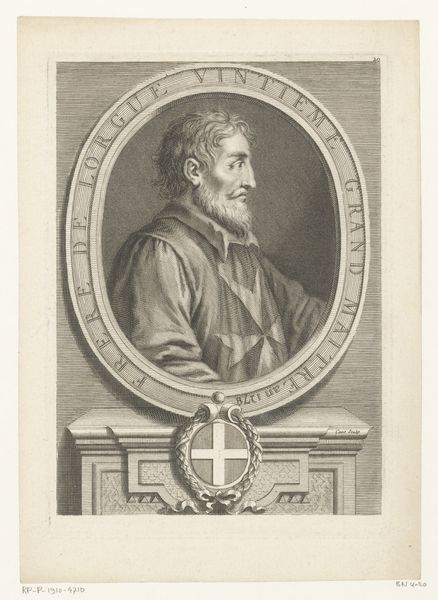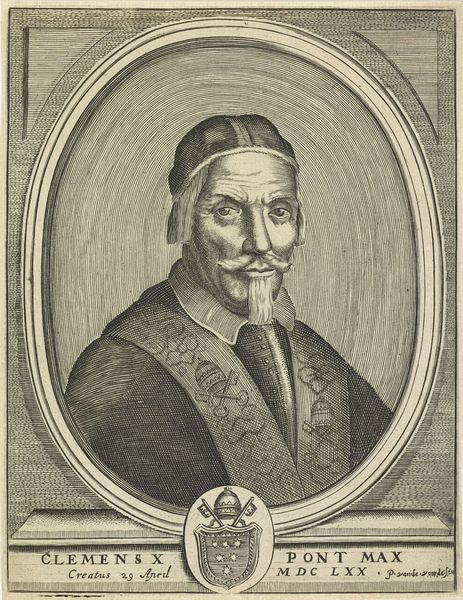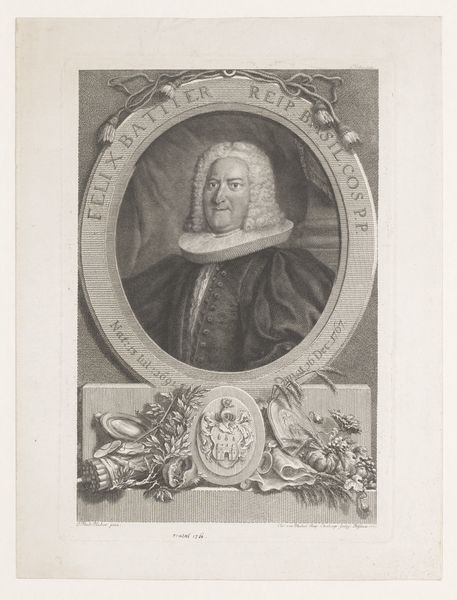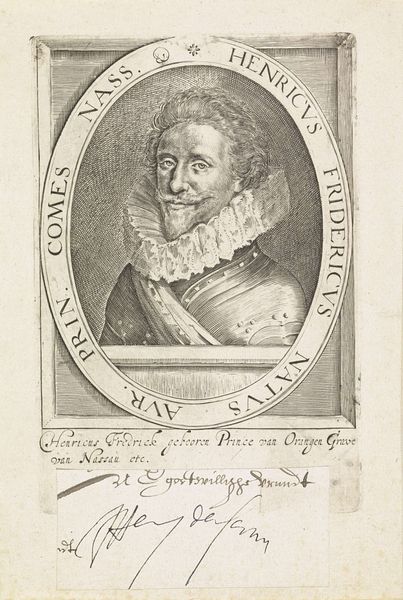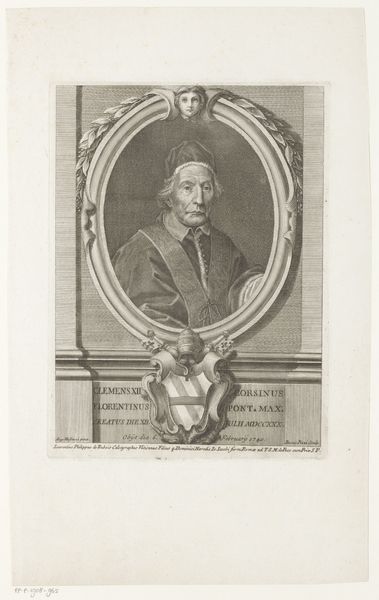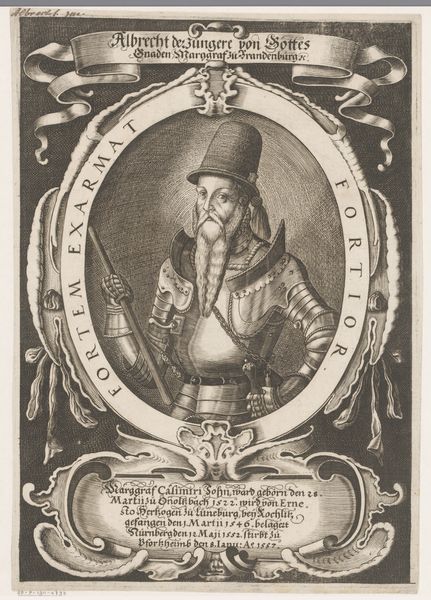
print, engraving
#
portrait
#
aged paper
#
baroque
# print
#
old engraving style
#
figuration
#
portrait reference
#
portrait drawing
#
history-painting
#
engraving
Dimensions: height 226 mm, width 163 mm
Copyright: Rijks Museum: Open Domain
Curator: Looking at "Portret van Clemens X" by Nicolas de Larmessin, dating circa 1642 to 1678 and residing here at the Rijksmuseum, my first thought is the incredible intricacy rendered on what seems like such a delicate medium. The print, achieved through engraving, captures so much. Editor: The linear quality gives the composition a sharp, almost austere mood. The contrast between the face and garments seems to be telling some hidden truth, making one wonder about the story behind its making and how prints, more generally, operated at the time. Curator: It’s interesting you say that, because engravings like this allowed for the relatively widespread dissemination of important portraits. Think of the way that power was reproduced, through these reproducible graphic technologies. Editor: Exactly! And in a portrait of a Pope no less—that ornate mozzetta surely took skilled labor to create such lifelike representation within the rigid confines of printmaking! What were the working conditions of Larmessin when producing this work? Curator: The formal choices certainly reflect the gravity of Clemens X’s position. Observe the composition, the careful arrangement of the lines. They create a sense of weight, an embodiment of papal authority. We might use semiotics to interpret these visual signifiers as cues to understanding the Pope's power and spiritual significance. Editor: While I find myself more drawn to questions regarding materiality. The use of engraving on a large scale surely must’ve meant the use of workshops that resembled early modern factories—the economic ramifications are intriguing! Curator: Fair point, though I think we can also see within the print the refinement and elegance associated with Baroque portraiture, fitting the cultural moment of its making. The attention to detail in Clemens’ facial features creates a powerful and, if I may say, almost severe, representation of the man. Editor: Yes, the texture itself contributes to this somber feeling. Thank you for bringing such rich details forward, considering that portrait engravings could reach such a large distribution. I think it brings forward a new layer of appreciation when contextualizing their impact in terms of materiality.
Comments
No comments
Be the first to comment and join the conversation on the ultimate creative platform.
